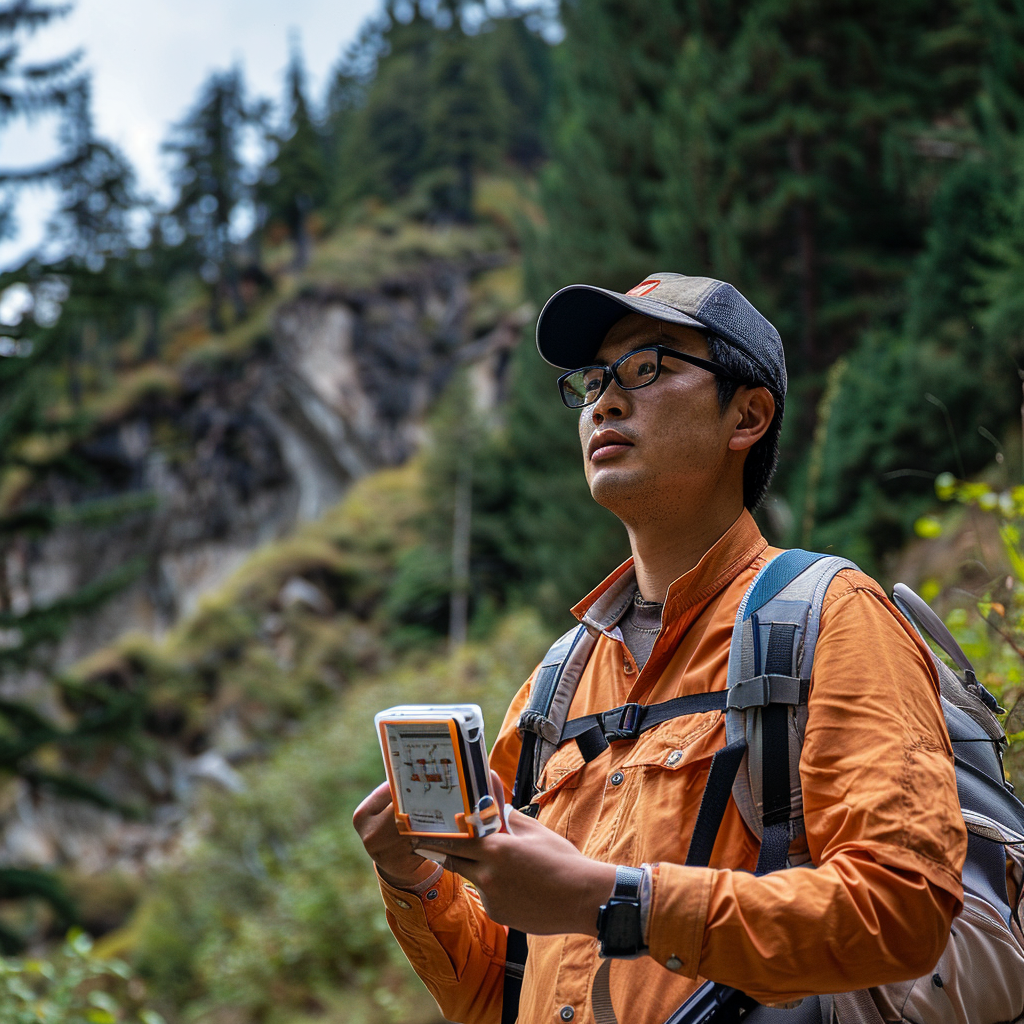發布:2025-06-04 瀏覽:0
森林資源資產評估是自然資源管理領域的重要環節,其核心價值在于將生態資源轉化為可量化、可交易的經濟價值,為生態保護與可持續發展提供科學依據。這項工作不僅涉及林業經濟領域,更與生態保護、碳匯交易、產權流轉等現代生態經濟活動密切相關。
Forest resource asset assessment is an important part of natural resource management, and its core value lies in transforming ecological resources into quantifiable and tradable economic value, providing scientific basis for ecological protection and sustainable development. This work not only involves the field of forestry economy, but is also closely related to modern ecological economic activities such as ecological protection, carbon trading, and property rights transfer.
評估工作的首要任務是明確評估對象與范圍。森林資源資產包含林木、林地、林下經濟作物及生態服務功能等多個維度。評估時需區分用材林、經濟林、防護林等不同林種,因其經濟價值實現方式存在顯著差異。例如用材林側重木材蓄積量與生長周期,經濟林則關注果實產量與市場價格波動,而防護林的生態價值評估需引入碳匯計量等創新方法。
The primary task of evaluation work is to clarify the evaluation object and scope. Forest resource assets include multiple dimensions such as trees, forest land, understory economic crops, and ecological service functions. When evaluating, it is necessary to distinguish between different forest types such as timber forests, economic forests, and protective forests, as their economic value realization methods have significant differences. For example, timber forests focus on timber volume and growth cycle, while economic forests focus on fruit yield and market price fluctuations. The ecological value assessment of protective forests requires the introduction of innovative methods such as carbon sequestration measurement.
數據采集是評估的基礎環節。專業團隊需通過現場勘查獲取胸徑、樹高、株數等實測數據,結合遙感影像解析林分結構與空間分布。同時需收集近三年的木材市場行情、當地林業政策、災害發生頻率等動態信息。值得注意的是,生物多樣性價值等非市場價值需借助替代成本法或條件價值法進行估算,這對評估人員的跨學科知識儲備提出較高要求。
Data collection is the fundamental step in evaluation. A professional team needs to obtain measured data such as breast height diameter, tree height, and number of trees through on-site investigation, and combine remote sensing images to analyze forest structure and spatial distribution. At the same time, it is necessary to collect dynamic information on the timber market situation, local forestry policies, and frequency of disasters in the past three years. It is worth noting that non market values such as biodiversity value need to be estimated using alternative cost methods or contingent valuation methods, which requires a high level of interdisciplinary knowledge reserves from evaluators.

在評估方法選擇上,市場比較法適用于具有活躍交易市場的商品林資源,通過比對近期同類資產交易案例確定價值。收益現值法更適用于經濟林或碳匯項目,需構建包含采伐收益、生態補償、碳交易收入的現金流模型。成本法多用于幼齡林或生態公益林評估,通過計算培育成本與合理利潤確定基準價值。實際應用中常采用兩種以上方法交叉驗證,以提高評估結果的公信力。
In terms of evaluation method selection, the market comparison method is applicable to commodity forest resources with active trading markets, and the value is determined by comparing recent similar asset trading cases. The present value of earnings method is more suitable for economic forests or carbon sequestration projects, and requires the construction of a cash flow model that includes logging income, ecological compensation, and carbon trading revenue. The cost method is often used for evaluating young forests or ecological public welfare forests, determining the benchmark value by calculating the cultivation cost and reasonable profit. In practical applications, two or more methods are often used for cross validation to improve the credibility of the evaluation results.
特殊價值要素的量化是評估中的技術難點。森林的固碳能力需依據IPCC碳計量指南,結合樹種特性與林齡結構進行測算;水土保持功能需運用水文模型評估涵養水源價值;景觀美學價值則需結合旅游市場數據與游客支付意愿分析。這些生態服務功能的貨幣化轉換,需要評估機構與生態學、環境經濟學專家深度協作。
The quantification of special value elements is a technical challenge in evaluation. The carbon sequestration capacity of forests needs to be calculated based on the IPCC carbon measurement guidelines, combined with tree species characteristics and forest age structure; The function of soil and water conservation requires the use of hydrological models to evaluate the value of conserving water sources; The aesthetic value of landscape needs to be analyzed in conjunction with tourism market data and tourists' willingness to pay. The monetization of these ecological service functions requires deep collaboration between evaluation institutions and experts in ecology and environmental economics.
評估報告應包含資源現狀描述、評估方法說明、參數取值依據、價值測算過程及風險提示等內容。特別需要關注法律權屬核查,確保評估對象不存在權屬糾紛或非法占用情形。對于涉及集體林權的項目,還需審查流轉程序是否符合《農村土地承包法》相關規定。
The evaluation report should include a description of the current status of resources, an explanation of the evaluation methods, the basis for parameter values, the process of value estimation, and risk warnings. Special attention should be paid to legal ownership verification to ensure that there are no ownership disputes or illegal occupation of the evaluated object. For projects involving collective forest rights, it is necessary to review whether the transfer procedures comply with the relevant provisions of the Rural Land Contracting Law.
在實踐應用中,評估結果常服務于產權交易、抵押融資、損害賠償、生態補償等場景。例如林權抵押貸款評估需兼顧資產現值與風險緩釋措施,森林生態損害賠償評估則要區分直接損失與間接生態服務功能損失。隨著碳匯交易市場的完善,森林資源評估正在向"生態產品價值實現"方向深化拓展。
In practical applications, evaluation results often serve scenarios such as property rights transactions, mortgage financing, damage compensation, and ecological compensation. For example, the evaluation of forest tenure mortgage loans needs to take into account both the present value of assets and risk mitigation measures, while the evaluation of forest ecological damage compensation needs to distinguish between direct losses and indirect ecological service function losses. With the improvement of the carbon trading market, forest resource assessment is deepening and expanding towards the realization of ecological product value.
當前評估領域正面臨方法論創新挑戰。傳統評估體系側重經濟價值核算,而新時代要求建立包含生物多樣性、氣候調節等多元價值的綜合評估框架。這需要評估機構持續更新技術標準,加強大數據與人工智能技術應用,提升復雜生態系統的價值解構能力,最終構建起符合生態文明要求的現代化森林資源評估體系。
The current evaluation field is facing methodological innovation challenges. The traditional evaluation system focuses on economic value accounting, while the new era requires the establishment of a comprehensive evaluation framework that includes multiple values such as biodiversity and climate regulation. This requires evaluation institutions to continuously update technical standards, strengthen the application of big data and artificial intelligence technology, enhance the ability to deconstruct the value of complex ecosystems, and ultimately build a modern forest resource assessment system that meets the requirements of ecological civilization.
本文由森林資源資產評估友情奉獻.更多有關的知識請點擊:http://m.kkpcgoldfoam.com我們將會對您提出的疑問進行詳細的解答,歡迎您登錄網站留言.
This article is contributed by the Friendship Contribution of Forest Resource Asset Evaluation For more information, please click: http://m.kkpcgoldfoam.com We will provide detailed answers to your questions. You are welcome to log in to our website and leave a message




















